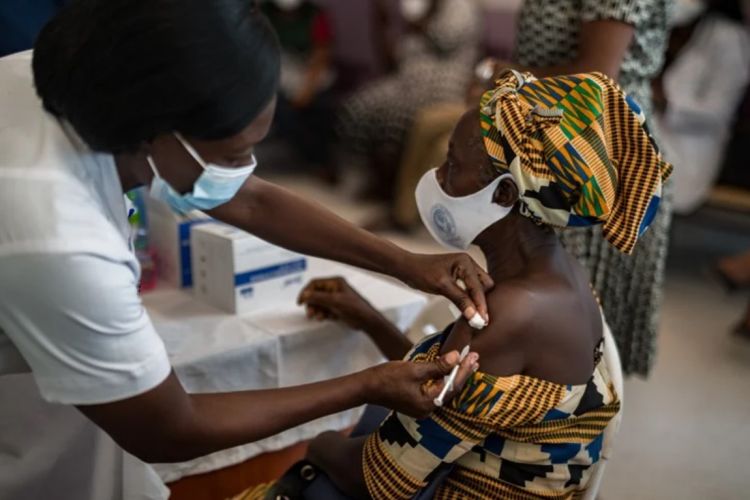
The approval of the historic Pandemic Prevention, Preparedness, and Response Accord — known as the pandemic treaty — was set to be a landmark moment in global health equity at the 77th World Health Assembly in Geneva in May 2024. However, after two years of intense negotiations, talks broke down due to disagreements and mistrust over several critical issues. The urgency of the situation is undeniable, and immediate action is crucial to ensure that renewed negotiations succeed by the 78th WHA in 2025.
For more than two years, countries around the world have worked towards a historic, once-in-a-generation goal: ensuring better preparedness for the next pandemic by learning from the devastation of COVID-19. This unprecedented global unity, a beacon of hope in these challenging times, demonstrated the collective resilience of world nations.
READ | Interest rate dilemma: A case for easy monetary policy amid uncertainties
The decision by sovereign states to draft a new international treaty to protect the world from future pandemics is a source of hope. Despite the chaos and divisions caused by war, political strife, and economic challenges, this potential pact offers a glimmer of optimism for a healthier future.
Official estimates indicate that COVID-19 killed over 7 million people, though the actual toll is likely much higher. The pandemic devastated societies, caused massive job losses, school closures, and inflicted long-lasting damage worth billions of dollars worldwide.
At the height of the crisis, 23 world leaders and the head of the World Health Organisation (WHO) issued a global call for a treaty to prepare for future pandemics. This joint letter was signed by leaders from countries including Fiji, Portugal, Rwanda, Kenya, France, Germany, South Africa, and the Netherlands, among others, alongside the WHO. Notably, leaders from China, the United States, Russia, Australia, and India did not sign the initial call.
In December 2021, the WHA’s highest decision-making body, comprising all 194 sovereign member countries, established an Intergovernmental Negotiating Body (INB) representing all world regions. The INB was tasked with drafting and negotiating an international pandemic prevention, preparedness, and response agreement. Negotiations began using a “zero draft” document, aiming to protect nations and communities from future pandemics. The treaty’s core objective is rooted in equity: to prevent, prepare for, and respond to pandemics.
The negotiation process for this treaty is led and decided entirely by WHO’s Member States in their sovereign capacities. The outcome document presented at the 77th WHA reaffirms “the principle of the sovereignty of states in addressing public health matters.” This emphasis is particularly important amid efforts by certain interest groups to spread misinformation claiming that the treaty would undermine national sovereignty.
The INB process invited written and oral inputs from member states and relevant stakeholders on successive drafts, including the Substantive Elements and the Zero Draft. Consultations were held with experts and the public, with regular briefings on progress. Benefits of this collaboration include the early detection and rapid intervention to prevent and identify new outbreaks.
Global pandemic treaty
The proposed pandemic treaty promises a significant new global partnership. It envisions the transparent sharing of critical data and scientific information in real-time, including surveillance data, pathogen samples, and genetic sequences. These shared resources are essential for developing medicines, vaccines, and diagnostic tools. Without such data, national research institutes and pharmaceutical companies would struggle to create life-saving treatments.
A core principle of the pandemic treaty is fairness and justice, aiming to ensure equitable access to resources needed to prevent pandemics, such as vaccines, personal protective equipment, technical knowledge, and healthcare. The ethical obligation to share the benefits of medical tools developed with shared information is a key element of the treaty.
The treaty seeks to address existing inequalities by suggesting that 20% of pandemic-related diagnostics, medications, and vaccines be made available to the WHO for equitable distribution. Any resulting royalties would help expand access globally. Additionally, a financial structure would support international cooperation, pandemic planning, and response efforts.
The INB’s draft presented at its 9th meeting covers a wide range of areas, including public health surveillance, pandemic prevention, One Health, health system resilience, and international collaboration. However, negotiations stalled over several key issues.
One sticking point is the Pathogen Access and Benefit-Sharing (PABS) system, a legal mechanism critical to the treaty. While the WHO’s Pandemic Influenza Preparedness Framework includes a PABS mechanism for novel influenza, the pandemic treaty aims to create a multilateral PABS system for sharing scientific data and benefits equitably. Some high-income countries and pharmaceutical companies have resisted proposals to share at least 20% of pandemic-related products in real-time for WHO distribution. Developing countries, led by South Africa, have called for an end to the “charity model,” advocating for human rights and self-reliance.
Developing countries, bitter about the inequities experienced during COVID-19 vaccine distribution, argue that all nations benefit from diversified manufacturing capacity. This requires funding, intellectual property flexibility, and knowledge-sharing by manufacturers currently concentrated in high-income countries. Disagreements over compulsory licensing, intellectual property waivers, technology transfers, and financing continue to be major obstacles.
The implementation of One Health, which links human, animal, and environmental health, has also sparked debate. Over 60% of emerging diseases, including SARS, Ebola, and COVID-19, have zoonotic origins. Measures such as animal surveillance and regulating intensive farming could help reduce zoonotic spillovers. However, these ideas remain contentious among member states.
To ensure compliance with the treaty, legal instruments need strong governance mechanisms, which were lacking under the International Health Regulations during COVID-19. Accountability, transparency, and broad engagement—including from civil society—are vital for good governance. Yet, the current draft of the treaty does not include mechanisms to monitor and support compliance.
A global social contract is within reach, one that could make the world safer and fairer. However, achieving this will require political will and compromise. Failure to reach a historic agreement could weaken international cooperation and trust, leaving the world more vulnerable.
The Global North is advocating for open scientific exchange, but wealthier countries remain insensitive to the deep anger felt by low- and middle-income nations over the health inequities experienced during the COVID-19 pandemic. According to The Lancet editorial from March 2024, “Far from making amends, a handful of powerful countries are sabotaging the best chance to translate the lessons from the COVID-19 pandemic into legally binding commitments that will protect us all.”
The success and failures of the pandemic treaty negotiations highlight the emerging importance of global health diplomacy, which involves negotiating health issues as part of international relations. However, ratifying the treaty alone will not suffice. National governments must begin planning for its implementation, potentially forming task forces to ensure intergovernmental cooperation and readiness at the national level.
Dr Joe Thomas is Global Public Health Chair at Sustainable Policy Solutions Foundation, a policy think tank based in New Delhi. He is also Professor of Public Health at Institute of Health and Management, Victoria, Australia. Opinions expressed in this article are personal.

